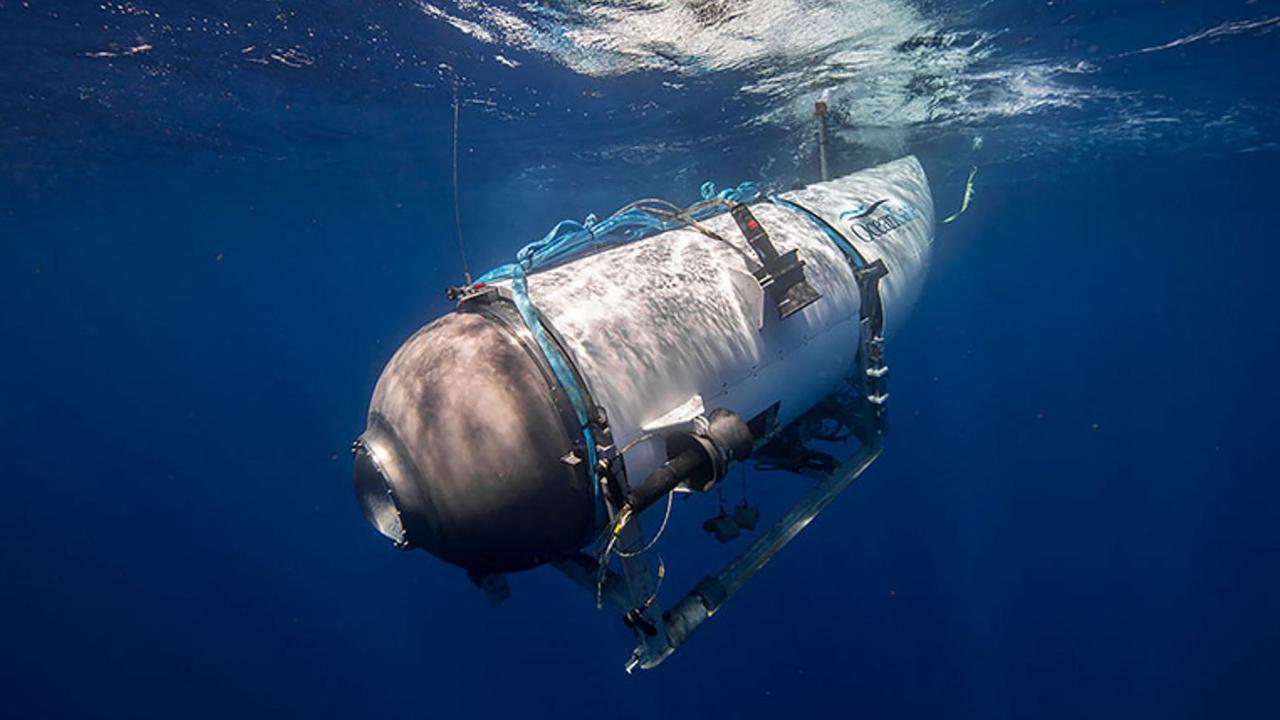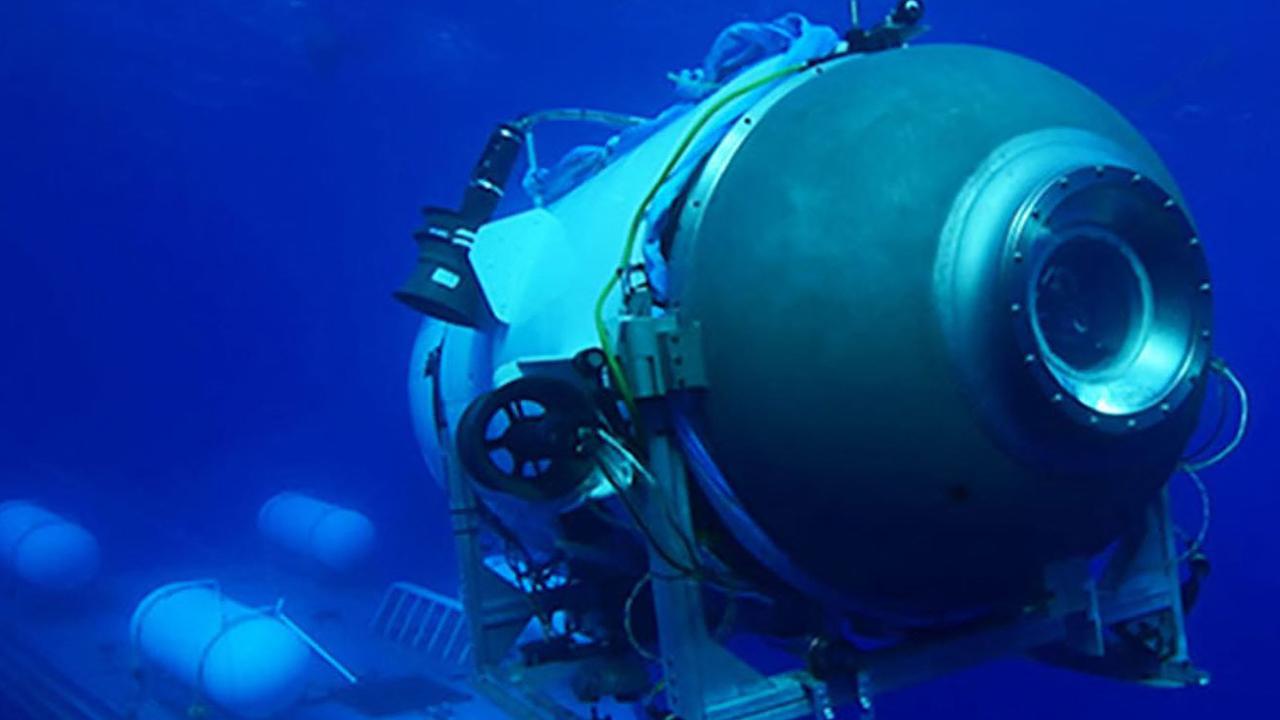How doomed Titanic submersible passengers spent their final moments
The eerie way the passengers on the doomed Titanic sub likely spent their final moments has been revealed.
The passengers on the doomed Titanic sub likely spent their final moments in total darkness looking out at eerie bioluminescent creatures floating by and listening to their favourite music.
Tragic details about the passengers’ last minutes alive surfaced as the wife and mother of fated father-son duo Shahzada and Suleman Dawood recounted to the New York Times how the trip had been a culmination of the family’s obsession with the 111-year-old wreckage, which grabbed their imagination when they visited a Titanic exhibit in Singapore in 2012.
The Dawoods’ Titanic fever only grew after a 2019 trip to Greenland — where they became intrigued by glaciers that sheathed into icebergs, the same ocean hazard that took out the Titanic in 1912, New York Post reports.
Christine said she then came across an OceanGate ad offering trips to the wreckage.
She was supposed to accompany her billionaire husband, but their 19-year-old son ended up taking her place because the couple’s original excursion was delayed by the pandemic, and by this time, the boy was old enough to go.

Christine revealed that her husband and son nearly didn’t make the disastrous Father’s Day trip 3800 metres below the ocean’s surface when their flight to St. John’s, Newfoundland — where the mother ship was casting off from — was cancelled and their subsequent flight delayed.
“We were actually quite worried, like, ‘Oh, my god, what if they cancel that flight as well?’” Chrsitine told the Times.
“In hindsight, obviously, I wish they did.”
But the family made it to the Polar Prince in time, and Christine and her 17-year-old daughter, Alina, were aboard June 18 to watch Shahzada, Suleman and three others — OceanGate founder and CEO Stockton Rush, 61, famed Titanic explorer Paul-Henri Nargeolet, 77, and British billionaire Hamish Harding, 58 — crawl into the 6.7 metre sub and disappear into the Atlantic Ocean.

Despite having stayed in cramped rooms with bunk beds aboard the Polar Prince, eating off trays and contending with 12-hour meetings on the days leading up to the voyage, the grieving wife and mother said her husband and son were ecstatic about the trip, which OceanGate repeatedly peddled as a chance for the tourists to be “explorers, adventurers, and citizen scientists.”
“He was like a vibrating toddler,” Christine told the Times of her son’s excitement just before he set off on the sub.
As for her husband, Christine said he longed to have the same adventures as Nargeolet, a famed Titanic diver who told the family of a time where he was trapped in a sub for three days.
“‘Oh, my god, this is so cool’,” she recalled her husband saying. “He was lapping everything up. He had this big glow on his face talking about all this nerdy stuff.”

But while the family had shelled out $250,000 each for the father and son to take the trip, their days on board the Polar Prince leading up to the cast-off were hardly extravagant.
Christine said the family had to contend with sleeping in bunk beds in cramped rooms, eating buffet-style meals on trays and contending with back-to-back meetings every day from 7am to 7pm.
In between, viewings of the James Cameron hit flick Titanic were routinely offered to passengers.
Christine said most of the meetings involved learning about the controversial sub and its safety but contended that some of the lessons flew past everyone’s head.
“That engineering side, we just had no idea,” she said. “I mean, you sit in a plane without knowing how the engine works.”
Christine is not the only one who has admitted to being puzzled by the Titan sub’s mechanism.
Bill Price, who boarded the sub in 2021, said his trip was aborted when Titan lost its propulsion system on one side.
He told the Times that Mr Rush could not get the vehicle’s “drop-weight mechanism” to release for ascent, so he instructed the passengers to try rocking the sub to help.
“After several rolls, we got momentum going,” Mr Price said. “Then, we heard a clunk, and we all collectively knew one [weight] had dropped off. So we continued to do that until the weights were all out” and the vehicle slowly rose back to the surface.
Mr Price said that despite the issue, the crew boarded the sub again the next day and had a successful visit to the shipwreck.

He also noted that among the safety lessons, one covered implosions due to pressure – the very thing that apparently befell the sub last month.
Mr Price said he and other passengers were told the pressure from the ocean would be like smashing a coke can with a sledgehammer or being crushed by an elephant standing on one foot — with 100 more pachyderms on top of it.
“In a macabre way, it was reassuring,” Mr Price said of the suggested promise that death would be instantaneous.
Along with the engineering lessons, Christine said the tourists on the ill-fated trip were recounted with tales of the deep by Mr Rush.
By the time the passengers reached their launch-off spot in the middle of the ocean, Christine said she felt assured by the “well-oiled operation” that OceanGate ran, with the crew prepping the passengers on what to expect.
Mr Rush told passengers they should have a “low-residue diet” the day before the trip, along with no coffee the morning of. He also recommended they wear thick socks and a beanie because of the frigid temperatures of the Atlantic.

The passengers were warned that condensation pools might build up on the floor of the submersible, so they should avoid getting their feet wet, Christine said.
They were also told to hold their expectations until they reached the Titanic, as the sub’s lights would be off to conserve battery but that they could still catch sights of bioluminescent sea creatures.
The passengers were also encouraged to load their favourite songs onto the sub’s music player, as the trip can last four hours.
But Mr Rush told them not to load any country songs.
Christine said her family’s enthusiasm never waned, even when Shahzada complained about all the equipment he had to put on before entering the Titan sub.
After bidding them farewell, Chrsitine and her daughter watched the sub set off into the Atlantic Ocean until it disappeared from sight, travelling about a mile per hour, or so slowly that no sense of motion would be felt.
“It was a good morning,” Christine recalled, adding that her giddy husband repeatedly said the day before, “I’m diving tomorrow! I’m diving tomorrow!”
More Coverage
When contact with the vessel was lost fewer than two hours into the two-and-a-half-hour descent, she was told such glitches were known to happen. If contact wasn’t made within the hour, the sub would drop its weights and return to the surface.
Wreckage of the sub was found last week.
This article originally appeared on New York Post and was reproduced with permission




